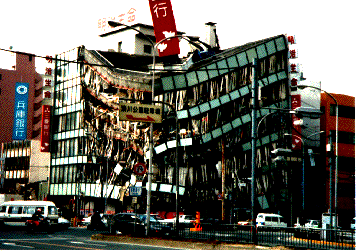This post has been replaced by A Background on Earthquake Early Warnings, found in the tabs at the top of the page.
Since the time earthquake monitoring began, scientists have wondered if earthquake prediction is possible. Some scientists attempted to link earthquakes with previous seismic activity, radon emissions, changes in the magnetic field and animal behavior. None of these earthquake “prediction” attempts were successful.
 |
| The QuakeGuard Warning System |
In the
1990’s, a commercial group began producing QuakeGuard Seismic Warning Systems
that use a seismometer placed under a location that detects the harmless, fast
moving primary waves of an earthquake, that arrive before more damaging S and Surface waves. The system then alerts the user by setting off an alarm, and
sometimes even shutting off the gas supply before the arrival of the damaging
Surface waves. QuakeGuard was the first operational version of an earthquake
early warning system that was able to alert users tens of seconds ahead of a
large earthquake, with no false positives.
 |
| Kobe Earthquake Damage |
On
January 17, 1995 at 5:46am (Japan Standard Time), a 6.8 magnitude earthquake
struck Kobe, the capital of Hyogo Prefecture in Japan. The quake killed over
140,000 people and caused about 100 billion dollars in damages.
The system proved its usefulness when on March 11, 2011 at
2:46pm (Japan Standard Time); a 9.0 megathrust earthquake struck its coast.
Eight seconds after the earthquake began, seismometers offshore Miyagi
Prefecture recognized the fastest moving (P) waves of earthquake and
immediately sent earthquake early warnings to the Tohoku Region of Japan. Earthquake early warning messages interrupted radio
and TV broadcasts automatically. Two sets of computer generated chimes rang,
followed by a prerecorded announcement of a man saying the following, “緊急地震速報です。強い揺れに警戒して下さい。 (Kinkyu
jishin sokuho desu. Tsuyoi yure ni kekai shite kudasai.)” Translated, the passage reads, “This
is an earthquake early warning. Please prepare for powerful tremors.” Although
the city of Tokyo received up to a minute of warning time, in Sendai (closest
to the epicenter) the warning was only fifteen seconds. Although fifteen seconds may not seem like much time, five
seconds is a sufficient amount of time to duck and cover under a sturdy desk. Few
people died in the earthquake’s shaking, proving the system’s effectiveness. Unfortunately
the tsunami that followed killed 15,845 people with 3,380 people still missing,
creating a need for larger seawalls and more efficient tsunami warnings.
Seismologists from Caltech, USGS Pasadena, USGS Menlo Park, and UC Berkeley, have teamed together with the California Integrated Seismic Network to create and perfect an earthquake early warning system for California, and later for the entire United States Pacific Coast. In 2011 a rough earthquake early warning system was created, and is currently being tested by selected seismologists, the Bay Area Rapid Transit System, and other companies and government organizations throughout California.
Like most functioning systems, there are some issues:
1. Point Source Approximation. The system is only able to perceive that an earthquake radiates from one point, not a rupture along a fault line.
2. Seismometer spacing. There are few seismometers along the Central California and Northern California Coast to detect earthquakes quickly. Seismometer spacing must be reduced to 12 miles apart from each other.
3. Funding. A system along the West Coast
would cost approximately one-hundred and fifty-million dollars over five years to perfect, and several million dollars more per year to fund.
2. Seismometer spacing. There are few seismometers along the Central California and Northern California Coast to detect earthquakes quickly. Seismometer spacing must be reduced to 12 miles apart from each other.
On November 29, 2012 the Gordon and Betty Moore
Foundation provided a 6 million dollar grant to help fund the Earthquake Early
Warning System. Although a system would cost over
$150,000,000, it would, in the long run, lessen costs of damages by earthquakes, by stopping production lines, and other sensitive industries, and will reduce personal injury caused by falling debris.
Update: 1/29/13 In January 2013 a bill was created to possibly fund an $80 million dollar earthquake early warning system for California.
Earthquake Early
Warnings have saved lives in many earthquake prone countries over the past few
years. Unfortunately it often takes the loss of thousands of lives to fund such
a system. Hopefully, a system will be publicly implemented on the West Coast of
the United States without another devastating earthquake to catapult its creation.
No comments:
Post a Comment
Comments that contain advertising or inappropriate content will be removed immediately.